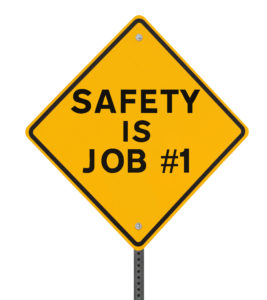 One of the most common methods in construction is abrasive blasting. It is the use
One of the most common methods in construction is abrasive blasting. It is the use
of grit sand particles with compressed air. These particles are then used to clean metal objects like steel. It can also be used to provide texture to poured concrete. Different types of materials can be used in abrasive blasting; this includes silica sands, coal slag, garnet sand, nickel slag and crushed beads among others.
Because it involves a broad range of materials, Safe Work Australia laid down safety guidelines for workers to observe. Here are some of the guidelines for handling abrasive blasting:
1. Identifying hazards
Hazard identification is the first step in controlling risks in the workplace. This can be done by through thorough observation. Simply walking around the area, inspecting the machine itself, reading the labels and communicating with manufacturers and workers involved can help one identify potential hazards. Hazards can be airborne contaminants, hazardous chemicals, noise and the use of the abrasive machine itself.
2. Risk assessment
After observation, risk assessment should be made. This includes identifying which workers are at risk and determining the potential source of risk. One should not forget to check on airborne contaminants when working on an abrasive blasting area, according to Syntech. Doing so can help reduce health hazards.
3. Risk control
There are three ways to effectively manage risks in the workplace. This includes substitution, isolation and implementing engineering controls. Substituting one product to another can help reduce risks brought about by airborne chemicals. Conducting the process in an isolated area can contribute to reducing risks.
4. Control measures
These control measures should not only be done but should also be continually reviewed to know whether they are effective or not. People in the workplace should also be aware of such policies to ensure its effective implementation.
There would always be risks involved in such line of work. However, proper planning and preparation can help minimise such unfortunate instances.

